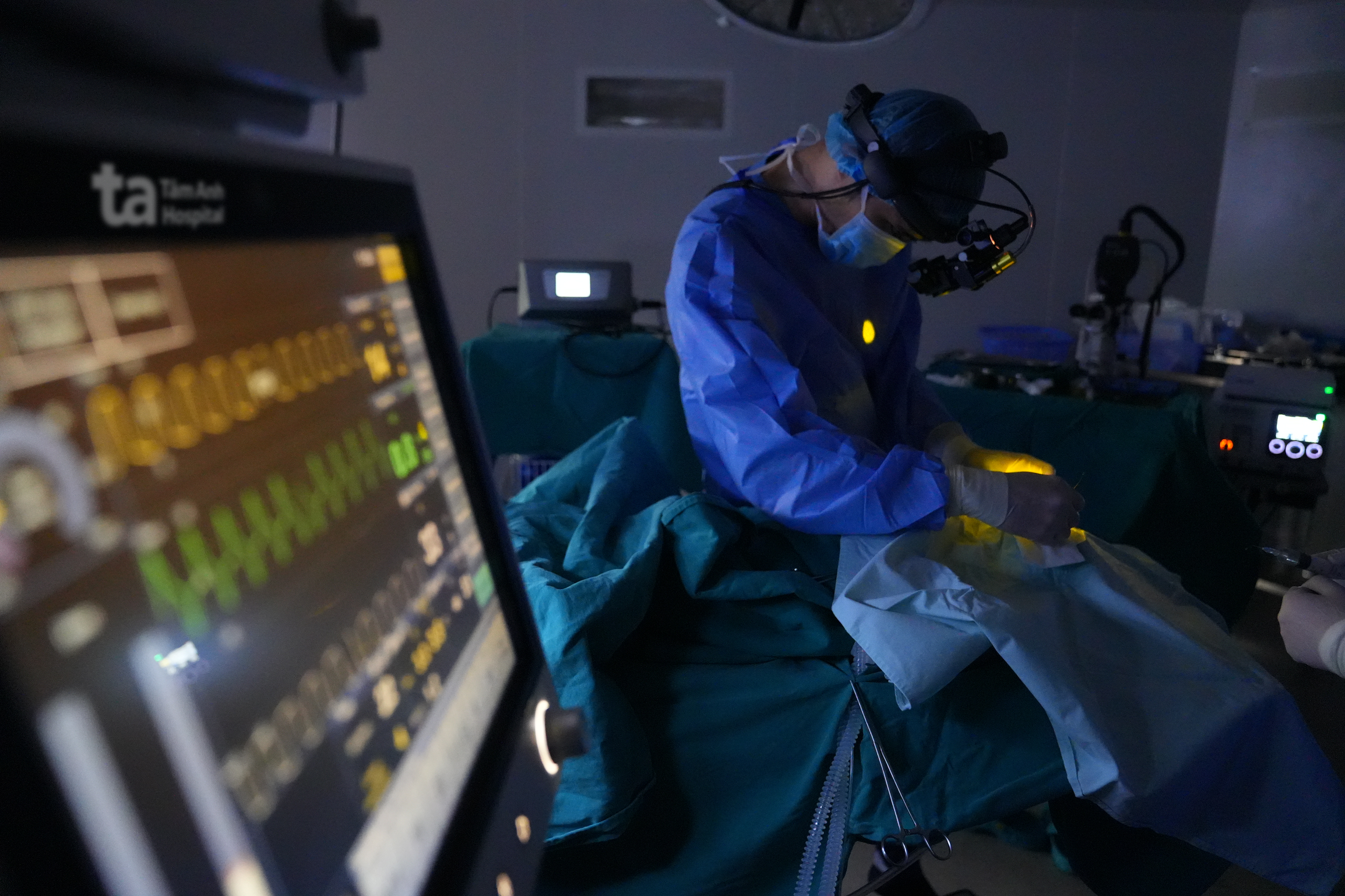Dr. Bui Viet Hung, Head of the Vitreoretinal Department at the High-Tech Eye Center, Tam Anh General Hospital, reported that the infant had severe damage to the retina, the area of the eye rich in optic nerve cells. Her left retina was completely detached, while her right retina showed signs of traction and folds, but still had a chance of recovery.
Dr. Hung diagnosed Ngan with Familial Exudative Vitreoretinopathy (FEVR). This condition involves abnormal and weak retinal blood vessels prone to fluid leakage, causing swelling, bleeding, and retinal detachment. If left untreated, it can lead to blindness. FEVR shares similarities with Retinopathy of Prematurity (ROP), but occurs in full-term infants. It is rare and difficult to detect without specialized equipment for postnatal eye screening.
Surgery was necessary, but the infant's age (3 months) and mild malnutrition presented challenges for the anesthesia and intubation team. Doctors consulted to determine a viable treatment plan, including post-operative care.
The team carefully calculated and adjusted the anesthetic dosage for a safe surgery, minimizing the impact on the infant's nervous system. Due to the complete detachment of the left retina, Dr. Hung performed cryotherapy, using extreme cold to halt disease progression and prevent complications like eye shrinkage, which could necessitate eye removal and impact the child's appearance.
The right eye underwent peripheral retinal photocoagulation using laser technology. The procedure was challenging due to the infant's small eye size. The operating room lights were turned off to enhance visibility of the fundus. Dr. Hung used a laser-integrated ophthalmoscope to target the small affected area on the retina. The laser created scars to prevent the disease from spreading to the central retina.
 |
Dr. Hung performs laser photocoagulation on Ngan's right retina. Photo: Tam Anh Hospital |
Dr. Hung performs laser photocoagulation on Ngan's right retina. Photo: Tam Anh Hospital
Ngan was monitored for 10 days post-surgery before being discharged. Follow-up appointments have been positive, showing gradual regression of the abnormal blood vessel growth in her left eye. The laser photocoagulation in her right eye created stable scars, halting disease progression, and she has shown light sensitivity. According to Dr. Hung, this is a positive sign, indicating the eye's ability to perceive images, a crucial factor for visual development, recognition, and cognition.
Many congenital or hereditary eye diseases, such as FEVR, ROP, congenital glaucoma, and congenital cataracts, can progress silently without noticeable early symptoms. Even full-term infants with normal birth weights can develop these conditions. Doctors recommend eye screening for infants within the first 6 months, especially those with risk factors like premature birth, low birth weight, prolonged oxygen therapy, family history of eye diseases, or signs like squinting, blurred vision, lack of light tracking, white pupils, or eye tremors.
Khue Lam
| Readers can submit questions about eye diseases here for doctors to answer. |












